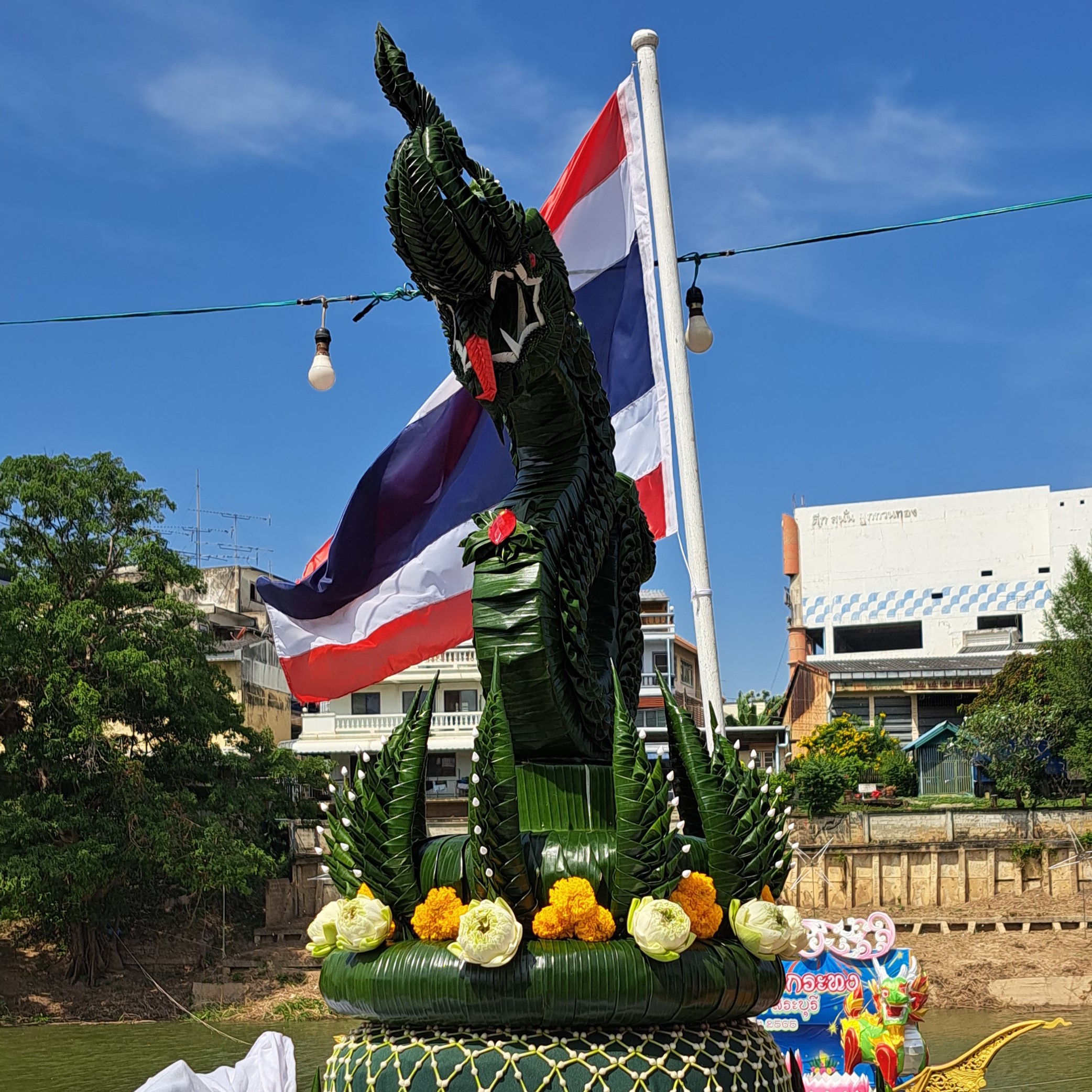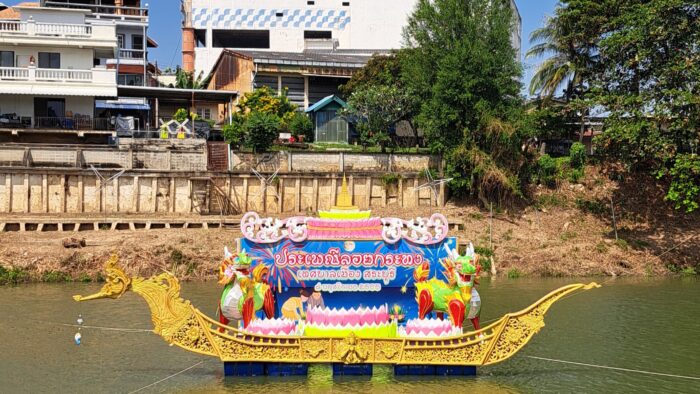Life is full of surprises, and my life is a living example of the same. Ever since I started while staying in Bangkok, the vibrant capital of Thailand, I have been deeply involved in celebrating every traditional Thai festival. These festivals are not just colourful celebrations but also steeped in historical significance, reflecting a deep maritime trade and cultural bond with India.
One such festival I witnessed was Loy Krathong, the most important festival in Thailand. It is also celebrated across Southeast Asia in other forms but with the same magnificence. The festival is celebrated in the auspicious month of Kartik as per the Hindu calendar.
I got interested in the origin of the festival and started my own research, which led me to learn about several interesting historical facts. According to the Indian Panjika or the Solar Calendar, the month of Kartik is full of auspicious rituals and ceremonies even in India.
न कार्तिकसमो मासो न कृ तेन समंयुगम्।
न वेदसदृशं शास्त्रं न तीर्थंगंगा समम्।।
Kartik Purnima is the most important day of the month for Hindus, Sikhs, and Jains. Various parts of India celebrate Dev Deepavali, on this auspicious day by lighting thousands of Diyas or oil lamps, decorated with flowers floating on rivers. it is believed that on this day, the Gods descend on Earth. This day is also known as Tripurari Purnima, as it was on this day, Lord Shiva destroyed the demon Tripurasura, as per the Puranas. This Purnima is also the last day when a unique ceremony called ‘Tulsi Vivaha’ is performed continuing from Prabodhini Ekadashi. Also, It is also believed that on this day, Lord Vishnu, returned to his abode (Baikuntha Lokas or Vishnu Loka ) after completing Ananta Sayaan (eternal sleep). The month of Kartik, is month is also known as the ‘Month of Damodara.' attributed to the episode when Lord Krishna in the form of little Damodara, allowed himself to be bound with ropes by Mother Yashoda.
For the Sikhs as well, Karthik Purnima is a day of great importance as it marks the birthday of the first Sikh guru, Guru Nanakdev. It is celebrated as Guru Nanak Jayanti.
It is also known as, or Deva-Deepawali and is celebrated as the Festival of Lights. Kartika Deepam is a related festival celebrated in South India and Sri Lanka on different dates.
Loy Krathong in Thailand
The Thai festival of Loy Krathong falls on the same day as Dev Deepavali and shows a thread of similarities between the two cultures. Interestingly, Loy Krathong also translates into ‘Festival of Lights.’ This festival originated in the ancient Sukhothai Kingdom, around 800 years ago, and is celebrated on the evening of the 12th full moon of the Thai lunar calendar. Historical texts suggest a thriving maritime trade connection between ancient India, or Bharatvarsha, and Southeast Asia influenced ancient Siam and other neighbouring countries.
Other than Dev Deepavali, this also reminded me of Bali Yatra, which is celebrated in Odisha. I could see the similarities between Bali Yatra and Loy Krathong as lighting the lamp and floating a boat is common to both festivals. To me, this was another symbol of our civilizational links. As an agrarian society, water played a pivotal role in the Thai way of living since ancient times. The element of water provides sustenance, while rivers, canals, and oceans acted as the main modes of transportation through a major part of Southeast Asian history. The main purpose of Loy Krathong is to pay respect and thank the ‘Goddess of Water’ for a year’s worth of her abundant supply and ask for an apology for polluting the waters. Surprisingly, the Goddess of Water in Thai tradition is also Maa Ganga and known as Phra Mae Khongkha. Nowadays, it is also a way to get rid of negativity gathered during the previous year and welcome good fortune in the coming year.
The word "loy" in Thai means ‘to float’ and "krathong" translates to ‘basket or boat.’ Hence, the meaning of Loy Krathong is ‘float a basket.' A krathong is a small lotus-shaped boat traditionally made from banana leaves and decorated with flowers. Traditionally, 3 incense sticks, a lighted candle, and coins are placed in the centre of the krathong. As the name implies, on the evening of the festival, Thai people gather around rivers, lakes, and canals to release these lotus-shaped baskets. Apart from the small krathongs, Thai people also produce a variety of large and beautiful krathongs, which are different in size and patterns and are mainly made from banana leaves, flowers, foam, and a few other ornamental materials.
Loy Krathong is related to various folklore and ancient tales revolving around Buddism. As per the Thai author Tayud Mongkolrat, when Prince Siddhartha decided to leave his worldly life behind, he cut off his topknot and adopted an ascetic lifestyle. The topknot was enshrined in a pagoda in the heavens and the prince went on to achieve enlightenment, becoming Lord Buddha. If anyone visits an old Buddhist temple in Thailand and sees the ancient painting, they can see a common picture of Buddha cutting his hair and flowing it in the river, which eventually goes into mystical heaven. River, Heaven, Buddha, his magical power, prayers everything is mixed in the beliefs of Thai religion.
Another legend holds that all rivers flow down from the heavens. Thus, Thai people float Krathongs in rivers and other bodies of water, believing that the offerings will find their way to the heavenly pagoda. There is also a belief that Lord Buddha once left behind a footprint on the bank of the Narmada River in India. Thus, Thai people float Krathongs in the belief that their offerings will find their way to the sacred footprint on the Narmada. There is also an interesting story about Monk Upagupta, a spiritual teacher in the court of the Mauryan king Ashoka. The venerable master was said to have quelled the demon Mara during a religious celebration held by the Emperor. This concept is associated with the famous story of the life of Lord Buddha in Thailand, where it is believed that Mara came to kill Lord Buddha, and ultimately lost the fight. Many Thai people believed UPAGUPTA was a great monk, who taught a lesson to Mara at the same time as Loy Krathong by the grace of Lord Buddha. Both Hindus and Thais also believe Lord Vishnu usually lies in a deep slumber on a giant serpent of the ocean. Thus, Krathongs float as offerings to Lord Vishnu, as all waterways lead to the oceans. Another source told a different story, which is still very important.
"According to this well-known story, the legend goes that a lady called Nang Noppamas, a consort of the King of Sukhothai, made the first decorated krathong, which she presented to the king as a gift. Noppamas was the daughter of a Brahmin priest and adapted an existing Brahmin tradition to make the krathong from banana leaves, which she molded into the shape of a lotus flower before adding a candle and incense sticks. The legend says that the king lit the candle and incense sticks and floated the krathong on one of the lakes in the city of Sukhothai. It’s certainly a romantic story, but whether it’s true or not is unclear. Historians claim Noppamas was a fictional character, but Loy Krathong is still regarded by many Thai people as the ultimate romantic festival. The role of Noppamas is acknowledged with Loy Krathong beauty queen contests held to find a lady to take on the honorary title of ‘Nang Noppamas’."

Other than floating Krathong baskets, festivities also include floating sky lanterns, Buddhist religious ceremonies, music, street food, and local fairs. Major rivers such as The Chao Phraya and Mekong are hotspots for celebration. Besides those main rivers, Loy Krathong is celebrated across the country. We experienced this beautiful festival in Lopburi province and Saraburi province. Various types of beautiful firecrackers were used that very evening.
Fun & fair are obvious parts of this festival. Locals and tourists have a wide scope of enjoyment through numerous traditional Thai foods and performing arts. I was enchanted at the sight of the Loy Krathong as it showcased the aesthetic Thai art and beauty. Such great art pieces were made for the rituals.
Author: Anita Bose is a Thailand-based author, artist and researcher. She was a speaker at the Rama, Raama, Raamaa festival.




